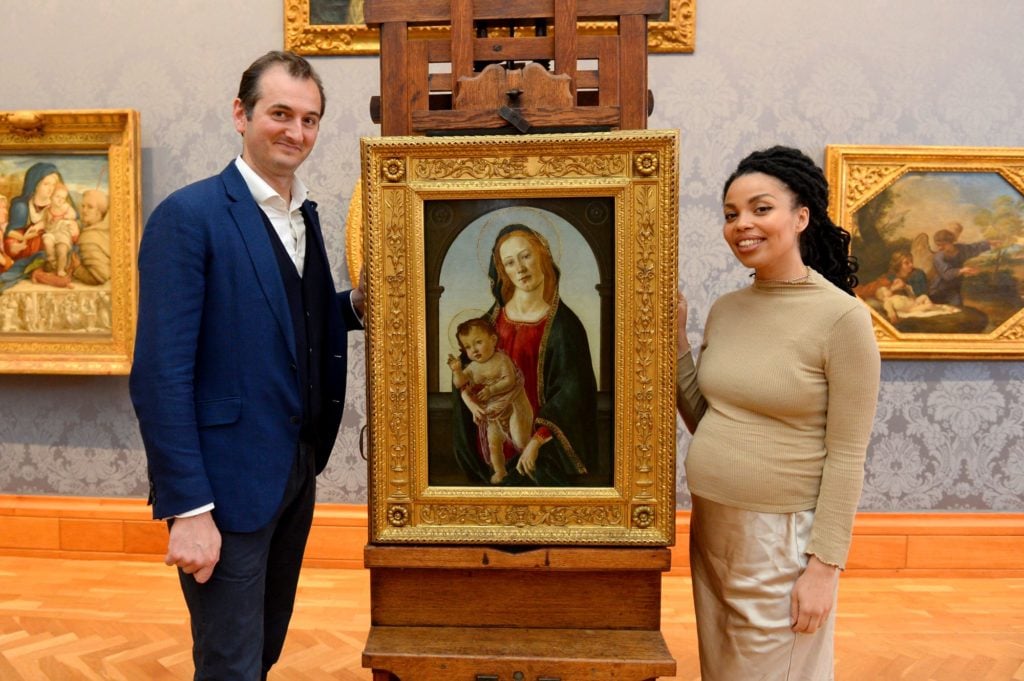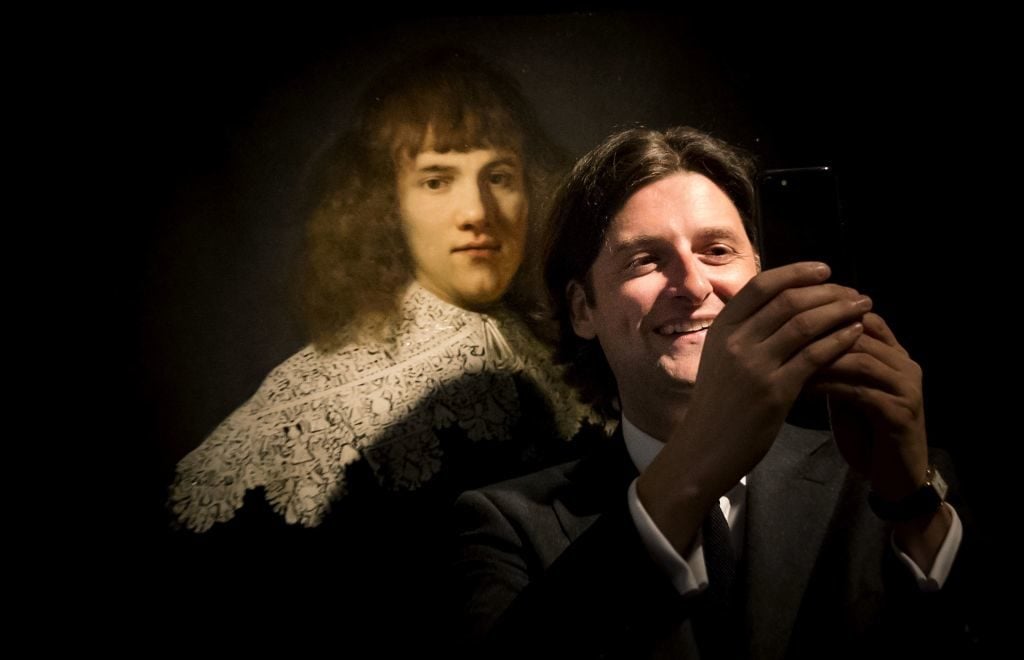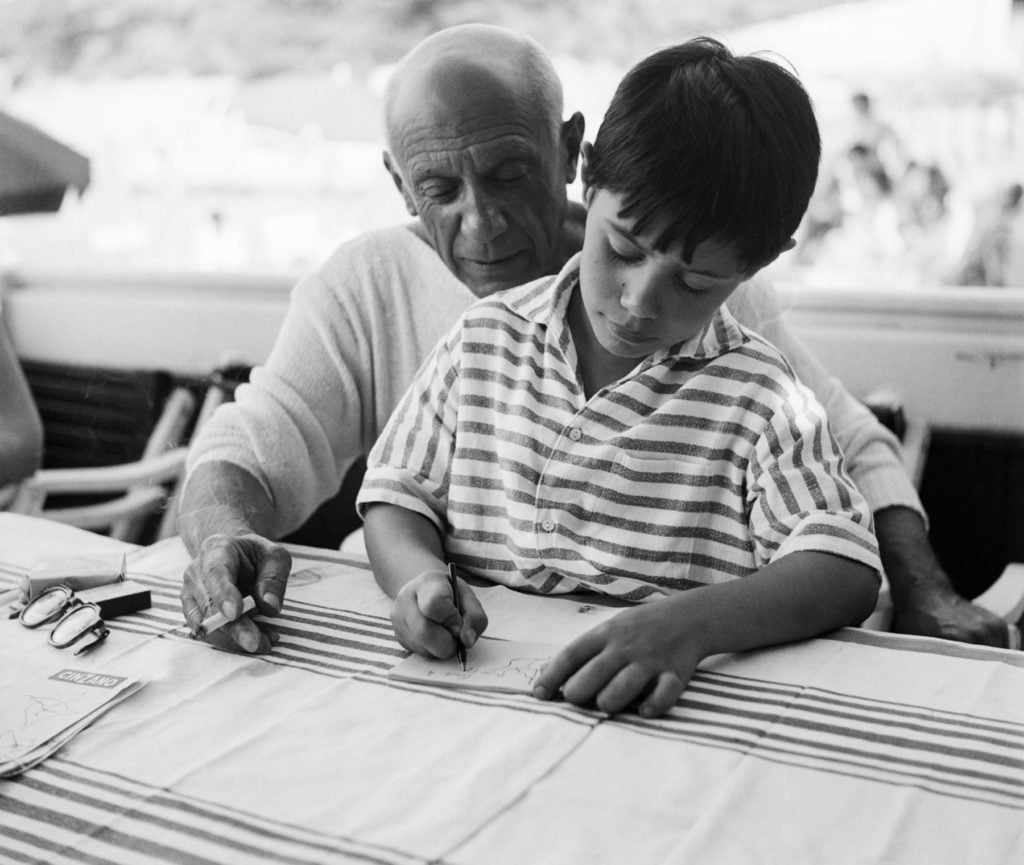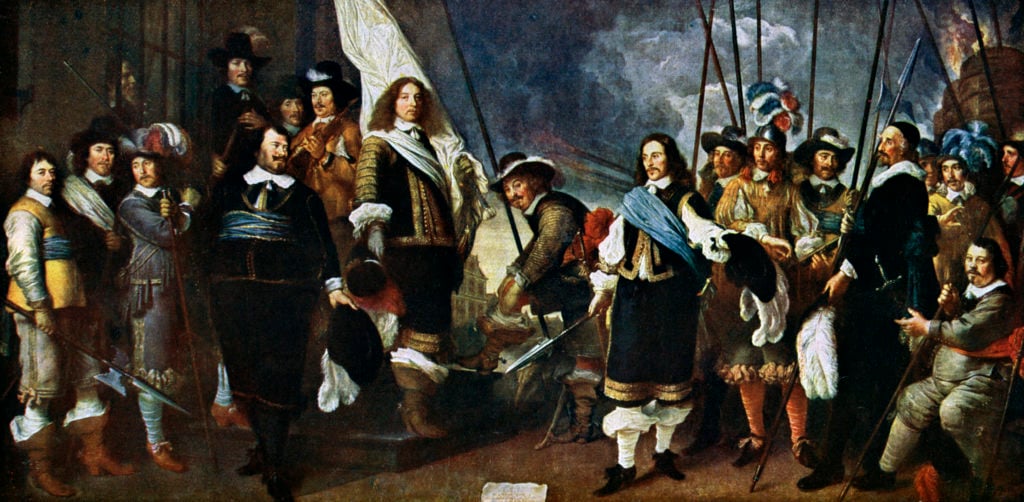Art World
Ever Wonder How Experts Find Long-Lost Masterpieces? We Asked Top Sleuths in the Trade to Share Their Secrets
Be prepared to spend a lot of time digging for answers.

Be prepared to spend a lot of time digging for answers.

Naomi Rea

Every so often, an art expert will make headlines for digging up and authenticating some long-lost masterpiece. Sometimes, their labors forever change the fields in which they work. Other times, the discovery makes them a lot of money.
Have you ever wondered how they do it?
We spoke to five experts who are unusually good at identifying and authenticating masterpieces. They offered some vital insights into the long and difficult process that goes into such major finds. Here, we’ve distilled their advice down to eight key pieces of advice for treasure hunters.

Photo by Patrick Kovarik/AFP via Getty Images.
1. Arm Yourself With the Appropriate Toolkit
TV art detective Bendor Grosvenor recently uncovered a long-lost Botticelli right under the noses of curators at a Welsh museum. He recommends that an amateur sleuth always carries a flashlight and a magnifying glass. You never know when such basic tools will come in handy.
Colette Loll, founder and director of Art Fraud Insights, LLC, adds that you can determine an awful lot with a really good microscope. She does, however, advise that you turn to an expert in the field for a thorough physical examination.
Still, don’t underestimate your own common sense. Use your nose. “If it smells like coffee, be concerned,” Loll says. (Coffee is commonly used to artificially age a work).

Detail of Jean-Marc Nattier’s Portrait of the countess de Tillières, acquired by Richard Seymour-Conway, 4th Marquess of Hertford, showing craquelure. Image courtesy Wikimedia Commons.
Dr. Jennifer L. Mass, an expert in material analysis and the president of Scientific Analysis of Fine Art, LLC, says that before sending a work to the lab, the owner can give it an initial inspection for physical evidence. She advises people to look for signs of oxidation. “Has the canvas or panel darkened and has the canvas turned brittle?”
Mass also notes that it is worth documenting the extent and type of cracks resulting from how the paint layers have dried, aged, and interacted with their support. This patterning, called craquelure, will vary depending on the period of the work’s production and will be important to compare to related works. You can also look for evidence of previous restoration and conservation campaigns, which would be expected from any work that is thought to be several hundred years old.
And don’t forget to flip the canvas over. Is there any evidence of exhibition or ownership history on the reverse of the stretcher or panel? Gallery labels and collector’s marks can be vital clues.

Amsterdam art dealer and historian Jan Six. Photo: Koen van Weel/AFP/Getty Images.
Loll says that any expert worth his or her salt will recognize that “authentication is a collaborative process,” with each prong of research conducted by a different professional. “There is no room for ego in art authentication,” she says, advising anyone seeking to authenticate their own masterpiece to build a team of experts who are prominent in their fields.
All of the experts Artnet News talked to agreed that conservators are a vital resource. Grosvenor says to spend as much time with a conservator as you can, as “you will need an intimate understanding of condition issues.” Loll adds that conservators are often impartial third parties working for museums, and can be keen to offer a really thorough investigation in order to help advance the field.
Jan Six, a Dutch art dealer and historian responsible for uncovering not one, but two previously undiscovered Rembrandts, explains that “restoration is often the key to many discoveries.” Great works of art can be hidden under yellowed or dirty varnishes or heavy overpainting, he says.

An example of an FTIR spectrometer. Photo by Keshavana via Wikimedia Commons.
A forensic analysis by a qualified expert is very important. Jennifer Mass explains that an expert in material analysis should be able to tell you whether the palette is as expected for the period and for the specific artist. They should also be able to confirm that no anachronistic materials or technologies are present.
“One of my most important tools for understanding not only the materials and techniques used to prepare a work of art, but also its degradation mechanisms, is Fourier-transform infrared spectroscopy,” Mass explains. The technology, which became widely available in the 1980s, allows experts to look at not just the pigments in paint, but also the binders, fillers, drying agents, and other additives. “Often forgers will work hard to get the pigments right, but the rest of the paint composition [will be] wrong,” she explains.
More recent innovations include multispectral and hyperspectral infrared imaging, which Mass explains are excellent methods for examining the preparatory layers or sketches of the work in a non-invasive manner. These are not only helpful with attribution, but have been responsible for a number of important art historical discoveries.
All the experts emphasized the need to read widely about the artist you suspect to have authored the work in your possession.
They encourage those who think they are on the trail of an undiscovered artwork to look beyond the existing monographs and biographies of the artist, and to conduct research into the provenance, location depicted, and the people in the work, as well as the artist’s daily life. Six advises being prepared to answer questions about how the work fits in with the rest of the artist’s oeuvre, and how it matches up to what other artists were doing at the time.

Pablo Picasso with his son, Claude, on August 21, 1955. Image courtesy Getty Images.
Robert Wittman, the founder of the FBI’s National Art Crime Team, says that we should not always take certificates of authenticity for granted, even if they do come from the appropriate authorities.
“The experts who are often used have no idea whether something is legitimate or not,” Wittman says. “How should Jean-Michel Basquiat’s father, Gerard, know what makes an authentic Basquiat? How does Claude Picasso know what his father did in 1932?”
Wittman also warns that there are always gray areas in scientific analysis. Expert copiers or forgers have become good at passing forensic tests. And the materials and tools of Modern artists like the Abstract Expressionists are still available to forgers today.
Loll also emphasizes the importance of looking beyond the physical work. “Most of the time the deception is uncovered not in the material work, but in falsified documentation,” she explains. “Forgers will go to extreme lengths to fool you.”
This includes creating fake galleries, shadow corporations, shell companies, fake documentation, fake certificates of authenticity, fake provenance, fake certificates of export, and more. “You name it, I’ve seen it,” Loll says. “Never underestimate the cunning of a fraudster.”

A 17th-century painting by Govaert Flinck. Photo by The Print Collector/Print Collector/Getty Images.
If you are looking to uncover a masterpiece no one else has spotted yet, you have to be willing to open your mind. As Wittman points out, even great masters have bad days.
“You can’t just look at the existing monographs, the existing research on paintings and bodies of work,” Six says, adding that discoveries usually come out of a group of works that have not been researched at all. “Sometimes you also have to dismiss your own preconceived ideas about what a great master is. You may end up stumbling upon something that feels wrong, but actually turns out to be right.”
Sometimes, poor scholarship lays a bad foundation for subsequent research. “A lot of things are attributed to Rembrandt’s students, because he had so many. But if you look closely you might find, for example, that their biographies don’t match up to the attribution.” One of Rembrandt’s students, for example, Govert Flink, has been credited with creating some works when he would have been just four or five years old.
“It’s crazy that some people just write and copy what they read elsewhere. Just because someone else has done the work doesn’t mean you should stop thinking for yourself,” Six advises. “A book will only be an ensemble of the current ideas of that moment. You need to dare to see it differently.”
All the experts warned that looking for undiscovered masterpieces is not a path to a steady income.
“You’re not going to pay your rent doing that,” Wittman says. “You can’t just find it in a book. It takes a lot of time and research, into the forensics, the provenance, everything, and even then it is just your belief. Then you have to have it authenticated by whatever committee manages the artist’s estate. If they are having a bad day, or if there are commercial reasons for not wanting to authenticate too many works, you’re out of luck.”
“You can’t expect next day delivery, or online authentication,” Loll warns. “These projects are incredibly time consuming. Most people don’t understand the level of expertise that is required.”
“Don’t try this at home,” Jan Six cautions. “The only way to be successful at this is to turn it into your lifestyle, 24 hours a day, seven days a week. It will be a long time before serious discoveries are made that will really change the field.”